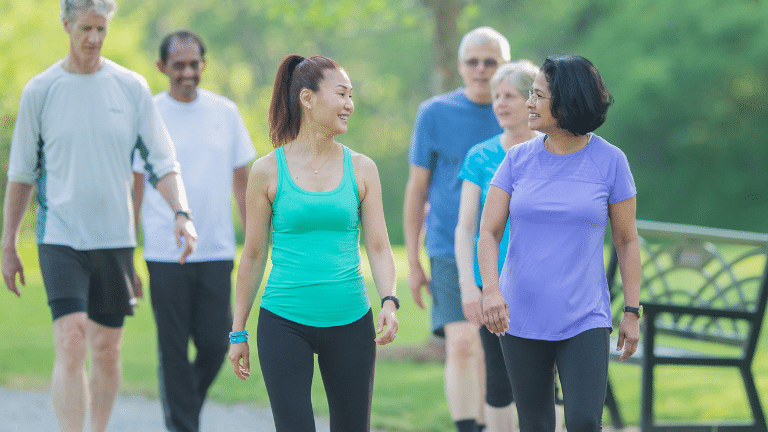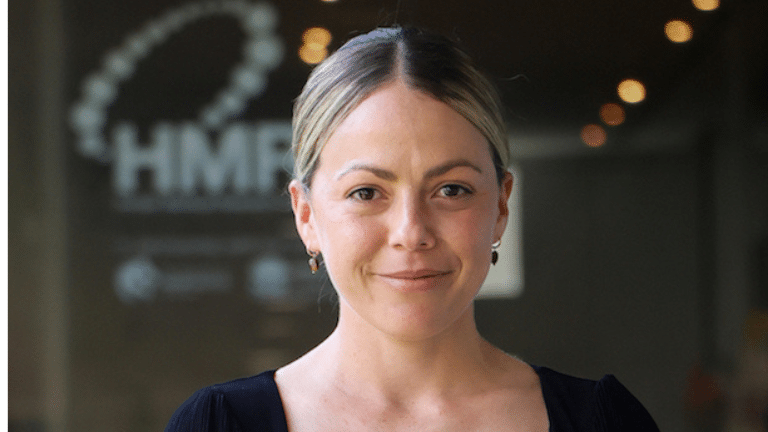
COPD affects around 10% of the Australian population aged 35 years and older, half of whom don’t know they have it and unknowingly mistake symptoms like breathlessness as signs of ageing or lack of fitness.
There is no current cure for COPD, however, there are a number of therapies used to help slow the progression of the disease, manage symptoms and improve quality of life, including exercise!

There is no current cure for COPD, however there are a number of therapies used to help slow the progression of the disease, manage symptoms and improve quality of life.
With over a decade of experience in respiratory health research, Dr Hayley Lewthwaite is a recognised authority in the field of COPD.
An Accredited Exercise Physiologist and research fellow for the Centre of Excellence in Treatable Traits – a consortium of researchers and clinicians collaborating to improve the health outcomes for people with airway diseases, she hopes to improve the health and wellbeing of people who live with COPD through optimising the prescription of exercise as a therapy to help manage symptoms and improve overall quality of life.

Hayley shares four reasons why exercise is beneficial for people living with COPD and other chronic lung conditions:
- Improves muscle function: Regular exercise can help improve muscle function – this includes muscles used for breathing. The muscles can use oxygen more efficiently, which makes breathing feel easier during daily activities. This in turn can improve your quality of life and independence.
- Builds muscle strength: Exercise, especially strength-based exercise, can build and maintain muscle strength. This is essential for individuals with COPD, as muscle atrophy (thinning or loss of muscle tissue) can occur with ageing and due to breathlessness-induced inactivity.
- Improved mood and mental health: Exercise causes your brain to release the ‘feel good’ hormones endorphin and serotonin, which have been shown to have positive effects on mood and mental health. This can help reduce symptoms of anxiety and depression, which are common in individuals with chronic disease.
- Improves bone density: Exercise, specifically resistance training, has been shown to improve bone strength and density. This is important for people living with COPD as they are at a higher risk of developing musculoskeletal conditions like osteoporosis.
It’s important for people living with COPD or other chronic lung conditions to consult with their GP or healthcare professional before starting any exercise program. Accredited exercise physiologists are the most qualified and experienced allied health professionals to prescribe and deliver exercise for people with COPD and/or other chronic health conditions. Exercise physiologists can create a personalised and carefully monitored exercise plan to maximise the benefits whilst ensuring it’s being done safely. People with COPD also can, and should, also access pulmonary rehabilitation — a structured program that involves supervised exercise training as well as education around how to live better with COPD.
To find an exercise physiologist click here
To find your nearest pulmonary rehabilitation program click here
HMRI would like to acknowledge the Traditional Custodians of the land on which we work and live, the Awabakal and Worimi peoples, and pay our respects to Elders past and present. We recognise and respect their cultural heritage and beliefs and their continued connection to their land.
Hunter Medical Research Institute
We’re taking healthy further.
Locked Bag 1000
New Lambton
NSW, Australia, 2305


This site is protected by reCAPTCHA and the Google Privacy Policy and Terms of Service apply.
Copyright © 2024 Hunter Medical Research Institute | ABN: 27 081 436 919
Site by Marlin Communications
